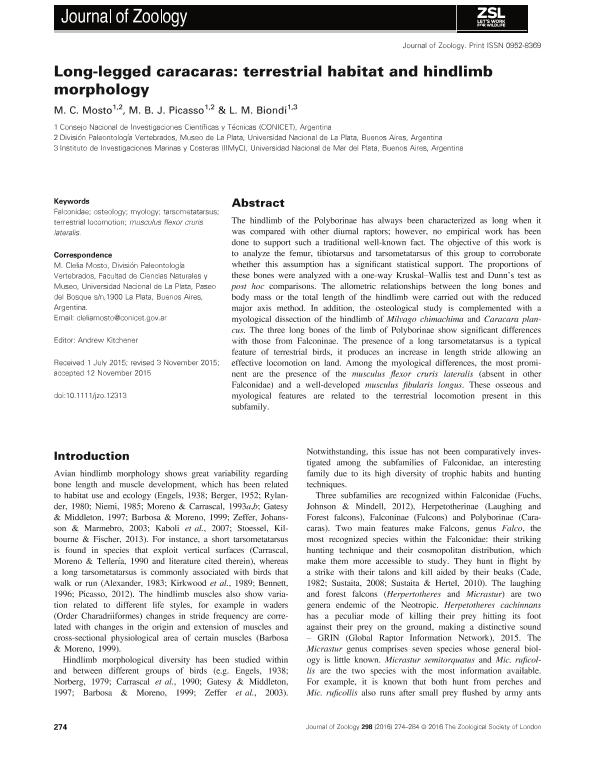Artículo
Long-legged caracaras: Terrestrial habitat and hindlimb morphology
Fecha de publicación:
04/2016
Editorial:
Wiley Blackwell Publishing, Inc
Revista:
Journal Of Zoology
ISSN:
0952-8369
Idioma:
Inglés
Tipo de recurso:
Artículo publicado
Clasificación temática:
Resumen
The hindlimb of the Polyborinae has always been characterized as long when it was compared with other diurnal raptors; however, no empirical work has been done to support such a traditional well-known fact. The objective of this work is to analyze the femur, tibiotarsus and tarsometatarsus of this group to corroborate whether this assumption has a significant statistical support. The proportions of these bones were analyzed with a one-way Kruskal-Wallis test and Dunn's test as post hoc comparisons. The allometric relationships between the long bones and body mass or the total length of the hindlimb were carried out with the reduced major axis method. In addition, the osteological study is complemented with a myological dissection of the hindlimb of Milvago chimachima and Caracara plancus. The three long bones of the limb of Polyborinae show significant differences with those from Falconinae. The presence of a long tarsometatarsus is a typical feature of terrestrial birds, it produces an increase in length stride allowing an effective locomotion on land. Among the myological differences, the most prominent are the presence of the musculus flexor cruris lateralis (absent in other Falconidae) and a well-developed musculus fibularis longus. These osseous and myological features are related to the terrestrial locomotion present in this subfamily.
Archivos asociados
Licencia
Identificadores
Colecciones
Articulos(CCT - LA PLATA)
Articulos de CTRO.CIENTIFICO TECNOL.CONICET - LA PLATA
Articulos de CTRO.CIENTIFICO TECNOL.CONICET - LA PLATA
Citación
Mosto, María Clelia; Picasso, Mariana Beatriz Julieta; Biondi, Laura Marina; Long-legged caracaras: Terrestrial habitat and hindlimb morphology; Wiley Blackwell Publishing, Inc; Journal Of Zoology; 298; 4; 4-2016; 274-284
Compartir
Altmétricas




